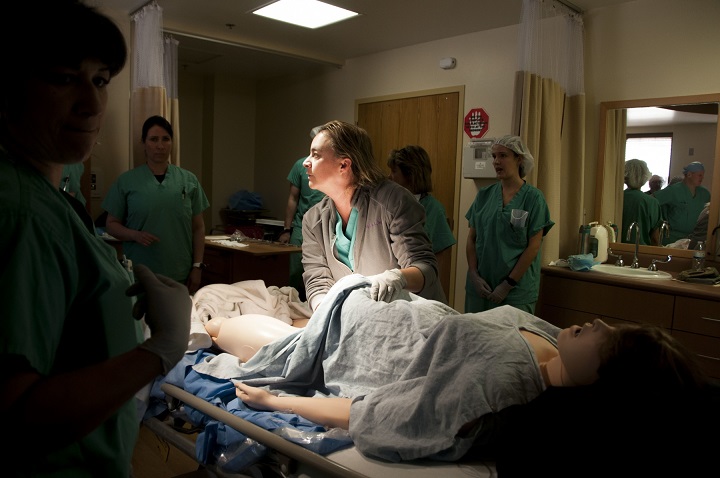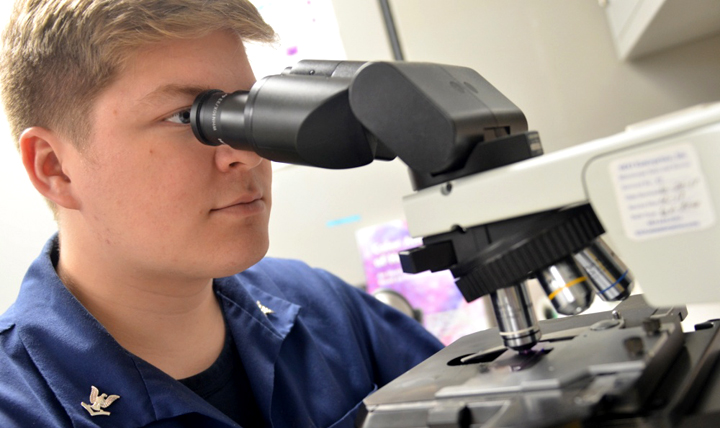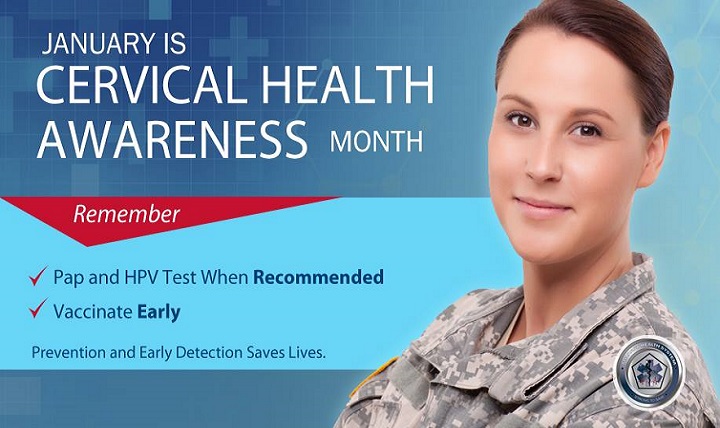
Women's health remains priority for doctors turned medical museum volunteers

The National Museum of Health and Medicine promotes the science and history of medicine, with a special emphasis on tri-service American military medicine. The museum identifies, collects and preserves important and unique resources to support a broad agenda of innovative exhibits, educational programs and scientific, historical and medical research. The museum maintains a national landmark collection of objects that sustains and promotes military medical history, tradition, and research to the Department of Defense and civilian communities. (NMHM graphic)
‘Strong progress’ in decreasing death from breast cancer
Article
10/23/2018

Improvements in detection, treatment pave the way
Military Midwives Advance Medicine
Video
10/23/2018

Military midwives assist in advancing military medicine. Capt. Brittany Hannigan uses educational opportunities to bring evidence-based practices to the patient's bedside.
Women’s Health: Taking time for yourself
Article
10/16/2018

The top two causes of death for women are heart disease and cancer
Military midwives as educators
Video
10/15/2018

Within the military, midwives serve as educators. Kwuan Paruchabutr shares how midwives ensure that all medical staff are well trained in women's health care.
Sticks and stones can break bones – and so can osteoporosis
Article
10/11/2018

Steps to take today to build a future of healthy bones
Military Midwives in Leadership Roles
Video
10/5/2018

The duties of certified nurse midwives go far beyond the labor delivery room. Cmdr. Kim Shaughnessy explains how midwives hold leadership positions across the Military Health System and how they help shape women's health policy.
Mammograms recommended for early detection of breast cancer
Article
10/4/2018

A mammogram is a low-dose x-ray used to detect the early stages of breast cancer
Midwives in the Military
Video
10/3/2018

Military midwives are key in the Department of Defense's priority of medical readiness. Army Lt. Col. Danielle Molinar shares ways midwives keep female soldiers ready to deploy.
Military medical museum archives acquires historic hospital newspaper series
Article
8/30/2018

Originally called Service Stripe, the newspaper covered the people and events at the former military hospital until the paper ceased publication in August 2011
New simulator preps WBAMC staff for OB emergencies
Article
5/1/2018

The state-of-the-art simulator provides medical staff up to various cutting-edge training scenarios
Getting tested for STIs is an 'important part of sexual health'
Article
4/26/2018

Chlamydia and gonorrhea are two of the most common sexually transmitted infections in the United States. Taking preventive steps, like getting tested and practicing safe sex, can help reduce risk of infection or spreading the infection to others.
Fort Belvoir corpsman comes through for moms
Article
4/20/2018

Striving to empower, lactation consultants critical for mothers, babies
The fight against cervical cancer
Article
1/24/2018

Learn about two weapons that can stop this cancer in its tracks
January is Cervical Cancer Awareness Month
Article
1/18/2018

Cervical cancer deaths have decreased by more than 50 percent due to regular screening tests that detect abnormalities before cancer develops
Cold weather injuries during deployments, July 2012 – June 2017
Infographic
1/18/2018

This infographic documents cold weather injuries during deployments for the July 2012 – June 2017 cold seasons.






















.png)











No hay comentarios:
Publicar un comentario